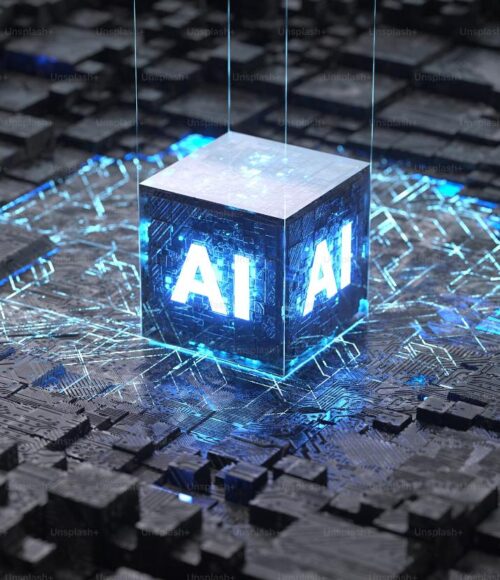AI Is Here to Stay—Is Higher Education Ready for It?

AI Is Here to Stay—Is Higher Education Ready for It?
This blog post is the first in a series about AI and its impact on higher education. For future posts, I’ll speak with higher education leaders, corporate executives, and marketing professionals to get their expert insights and predictions.
Having attended several higher education conferences in the past few months, I can tell you that one topic emerged over and over (and over) in sessions and discussions: artificial intelligence (AI).
At the CLO Symposium, Chief Learning Officers acknowledged that AI is the next step in corporate training. At UPCEA MEMS, a broad cross-section of higher education professionals questioned how to leverage AI-generated content while maintaining authenticity. And so on.
The tidal wave of AI is approaching quickly, and it’s not a matter of if higher education will need to embrace AI but how and when. In fact, AI is poised to be even more disruptive than the internet once was—both in speed of adoption and magnitude of impact.
One significant area of impact is job disruption, as one expert predicts AI could replace 40% of jobs in 15 years. The corporate world and higher education must both be willing to evolve to meet the needs of the new workforce landscape.
But change is never easy, especially when there is still so much uncertainty about what the future holds.
AI: The Good, The Bad, and the Unknown
Personally, I’m interested in exploring AI from various perspectives: as a parent with three children entering adulthood, as an employer leading a team, as a colleague in higher education, and as a partner to corporate organizations.
I’m certainly no AI expert—so far, I’ve mostly been an observer assessing the technology’s potential for harm and good. A few of my most interesting observations have occurred in my personal life.
On the anniversary of my mom’s passing, my daughter approached me with a compelling proposition. She wanted to upload a voice recording of her grandmother into an AI generator, which would enable her to make that voice say anything she wanted it to.
What followed was a fascinating conversation about the potential ramifications of such an experiment. Would it be triggering or healing from a therapeutic standpoint? I’ll admit that part of me liked the idea of having conversations with my mom’s voice.
Of course, as with any technology, AI has a dark side. The experience with my daughter reminded me of an incident several years ago when my dad received a phone call from someone claiming to be my daughter, saying she needed $6,000 to get out of jail. My dad withdrew the money immediately, ready to pay it. Thankfully, he called me first, and I explained that he was being scammed. But think about the potential of using AI in this scenario. Today, a person’s actual voice could be on the other side of the call, making scams that much more effective.
One of the issues I’m most curious about pertaining to AI is how to discern what’s real from what’s not. How can I trust sources of information? How can I trust my own ability to make critical distinctions between reality and illusion in this new landscape full of unprecedented possibilities?
Tech influencers are already warning that current AI guardrails aren’t sufficient—an unusually conservative take from that crowd. Even they recognize that ethics are a critical part of the discussion.
In the best-case scenario, I see AI as an avenue for fostering deeper connections between people: another way to share experiences as we would in a blog post, social media, or face-to-face over coffee.
Overcoming the Discomfort of Change and Uncertainty
In general, humans are terrified of the unknown—especially an unknown that could involve robots taking over the world. I’m kidding (for now). But there is a big question mark hanging over the future of AI, and that makes some people incredibly uncomfortable.
Luckily, there is a potent antidote to uncertainty and the discomfort associated with it: acquiring knowledge. In the simplest terms, learning makes the unknown knowable. The more you understand something, the less scary it becomes.
Now is the time to begin exploring AI without the pressure of having to master it or even fully embrace it immediately. Start by taking a small step out of your comfort zone—like using ChatGPT to conduct a search instead of defaulting to Google like usual.
Will there be people who decide they’re done learning new technology or are selective about which applications they adopt? Most likely. This phenomenon always occurs with the introduction of new technology. I watched it play out with my parents. My mom was willing to use a computer and flip phone but never got comfortable using email. My dad used email but could never bring himself to buy a smartphone
We’ll all need to make choices about how far we’re willing to go and which applications we’re willing to engage with—personally and professionally.
Love it or hate it, AI is here to stay, and its impact will be massive. Despite my own unease and uncertainty, I can say that I’m committed to being as open-minded as possible, driven by MindMax’s core value to learn always.
I’m excited to listen and learn and perhaps change my perspective as I speak with experts about different topics related to AI: technology, privacy, the role technology plays in education, humans’ ability to embrace change, and how AI will impact the present and future.
Follow me on LinkedIn, where I’ll share links to each of the blog posts in this series as they become available, and don’t hesitate to reach out to me there with your thoughts about AI. I’d love to hear what you’re thinking!